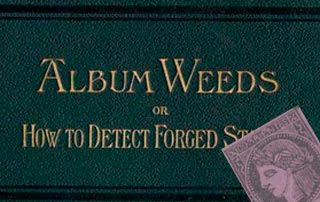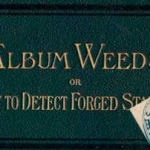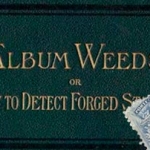Album Weeds – Corrientes


 1856-1875. Various values.
1856-1875. Various values.
Genuine. 8 Types
Very roughly engraved, in épargne, on thin, very coarsely-grained, colored wove paper. The profile of the goddess of Liberty (evidently copied from the French stamps of 1849) is that utterly impossible outline, commonly called “classical”, which consists of a straight line, drawn from the top of the forehead, where the hair begins, down to the tip of the nose. The front of the wreath, above the forehead, shows three leaves, which project beyond the outline of the hair, into the black background of the central circle. Two leaves (which are plainly leaves) project, similarly, at the back of the head, where the chignon would be. There is a narrow band of shading, about equal in width all the way, extending from where the chin and neck join, up to where the ear ought to be ; and this is quite distinct from the shading on the side of the neck, which does not join it anywhere. The grapes, above where the ear ought to be, are represented by a varying number of pear-shaped, or wedge-shaped, colored marks, on a black background; not one of them being in the least rounded, in any of the eight types. The bottom outline of the base of the neck, where it is supposed to be cut off, is not rounded at all. In most of the types it is horizontal, and, in some of them, somewhat oblique; but, whether horizontal or oblique, it is always straight. There is an irregularly-shaped blotch of black on the side of the nose, generally perfectly solid; and, in the issues from 1861 onwards, there is also usually a blotch in the lower compartment, where the lettering has been removed, and caused, no doubt, by the thin paper being forced by the press into the hollow where the value was, and taking up some of the ink lying at the bottom of it.
First Forgery
This purports to be the 1 real M. C., of 1856. Lithographed, in black, on very stout, coarse-grained, pale dull blue wove paper. The profile of the forehead and nose is not quite a straight line, but very nearly so.
There are four leaves projecting above the forehead. There is a wide patch of shading, from the chin to nearly where the ear ought to be; and this shading consists of distinct dots. There are nine grapes, two of them like commas, and the others mostly oblong; the genuine have never fewer than sixteen grapes. The bottom outline of the base of the neck is rounded, being lowest in the centre. There is a small, straight line on the side of the nose, near the eye, to represent the blotch of shading of the genuine.
Second Forgery
This is also an imitation of the 1856 issue. Lithographed, on stout, rather bright blue wove paper, not so coarsely wove as the first forgery, The inscription is 1 REALE N. C., instead of UN REAL M. C. The nose is decidedly Roman, being a regular “beak”; and there is a very distinct depression near the eye, so as to relieve the profile from the inane, classical outline. Five leaves of the wreath come to the front, over the forehead, though their points seem to be broken off. The shading on the cheek is composed of long lines, and most of them run into the lines of shading on the side of the neck. The two leaves of the wreath, projecting where the chignon would be, if the goddess wore one, have no vein-marks in them, and look much more like two ends of ribbon. The grapes are all more or less rounded. There are five distinct lines on the side of the nose. The base of the neck is rounded; i.e., it is lowest in the center. The inscription will alone be sufficient for the instant detection of this forgery, which is very poor.
Third Forgery
This purports to be the issue of 1861. Lithographed, on pale, dull blue wove paper, so stout that the graining can hardly be seen through it. The stamp is the same as the second forgery, with the lower value removed; so the tests are the same as those given for the said second forgery. There is no patch of black in the lower frame.
Fourth Forgery
This counterfeits the issue of 1864. Lithographed, on soft, medium, very coarsely-grained wove paper, of an ugly, very bluish-green tint. The design is exactly the same as in the third forgery.
Fifth Forgery
This also pretends to be the issue of 1864. Nicely lithographed (far better than the genuine), on thick, hard, white wove paper, tinted on the face with the palest possible shade of yellow-green. The paper does not seem to have any grain whatever. The profile is like the genuine. Six leaves project beyond the forehead, to varying distances. The narrow band of shading, from the chin to where the ear ought to be, is thinnest in the middle, and widest at the top. All the grapes are more or less rounded. The base of the neck is somewhat rounded in the center. The blotch on the side of the nose is very small. There is no sign of any blotch in the lower label. Some of the vertical black lines, below CO of CORRIENTES, are wavy , though they are all straight in the genuine. This counterfeit is evidently “made in Germany”, as the word “Falsch” is printed below the bottom of the stamp, in white letters, so very faint that they would not be noticed, unless specially looked for.
Postmarks
Genuine.—A large, rounded oval, of small, oblong dots. Also a pen-stroke.
Forged.—The fifth forgery is uncancelled. The rest have some undecipherable blotches, apparently lithographed at the same time as the stamps themselves. Used copies of the genuine are not commonly met with.
Reprints
Among the reprints which have been issued since 1883, when the plates were sold to a private speculator, I must mention that of the first issue; for the inscription, UN REAL, M. C., is forged, being of a different type from the lettering of the original. I have not seen this reprint, but it is spoken of in Mr. Bacon’s book.
From: ‘Album Weeds’, 3rd edition by R. B. Eareé. 1906




Leave a Reply
Want to join the discussion?Feel free to contribute!